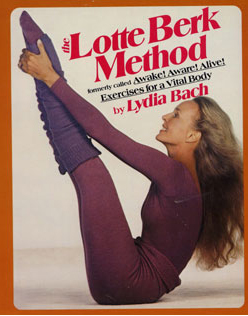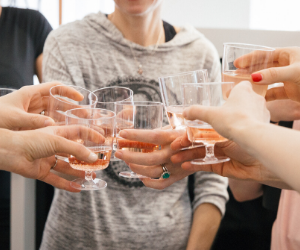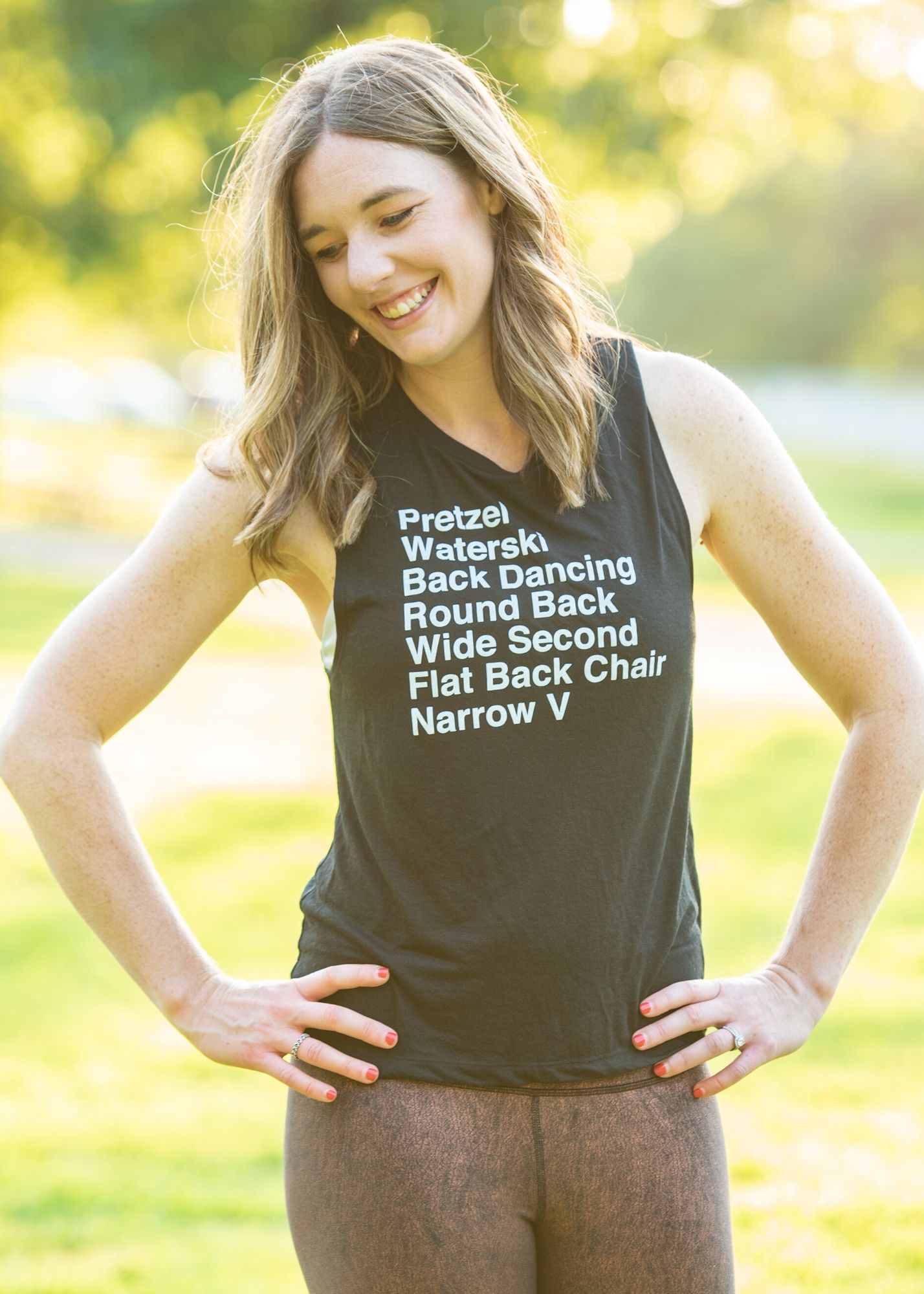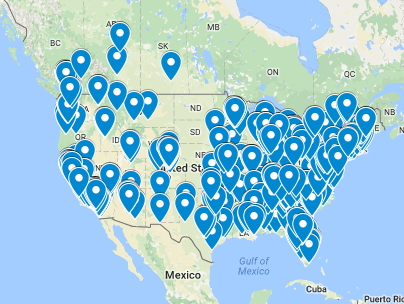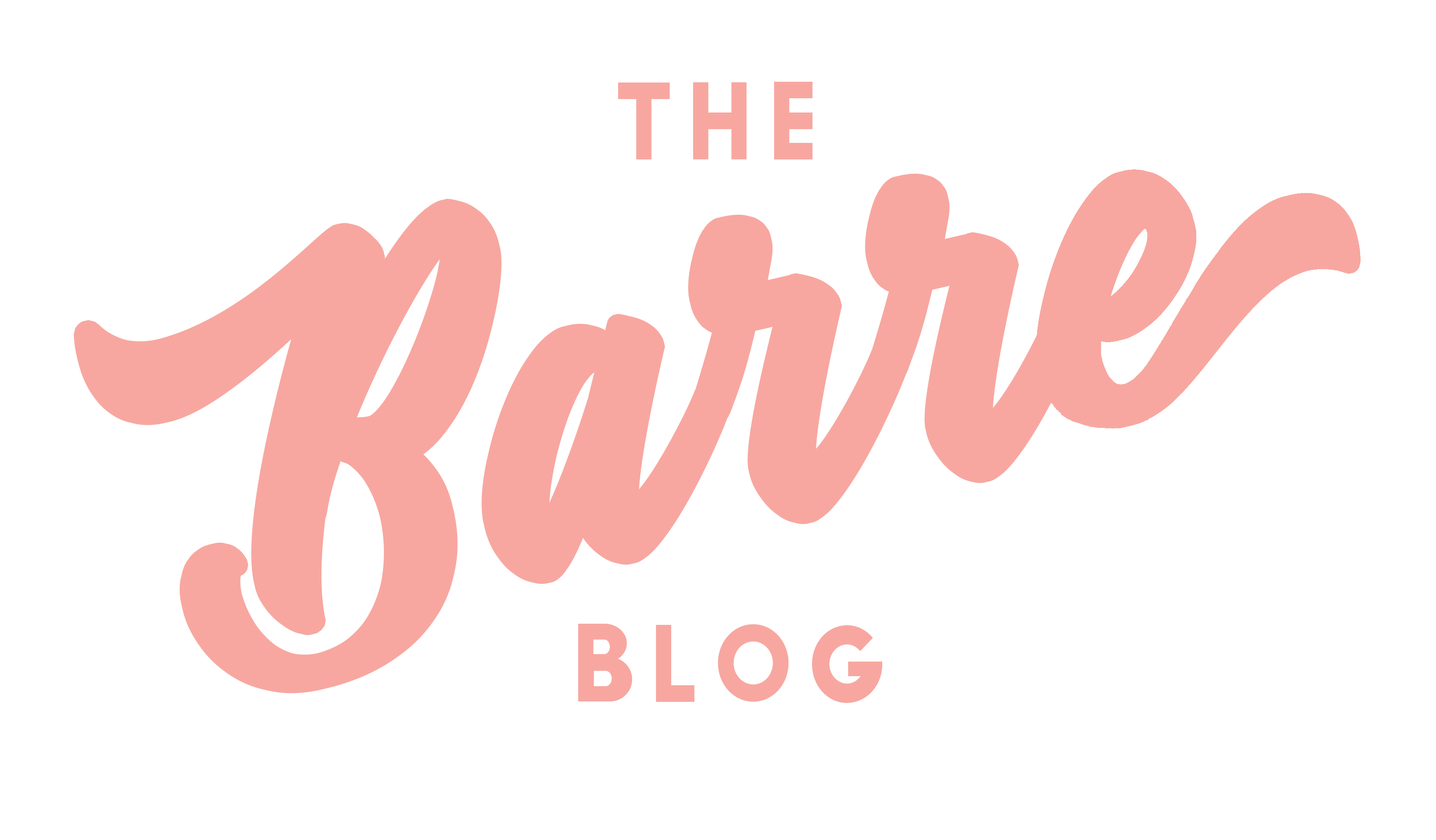What is it like to train under Esther Fairfax, the daughter of famed dancer Lotte Berk? Barre Nouvelle‘s Deborah Thompson knows a thing or two about that. Deborah offers Barre Nouvelle classes based on the Lotte Berk Technique and her certification course is the only, true Lotte Berk Technique-based certification in Canada.
I sat down with her to get to know more about what training under Esther was like and what she thinks of the evolution of barre.
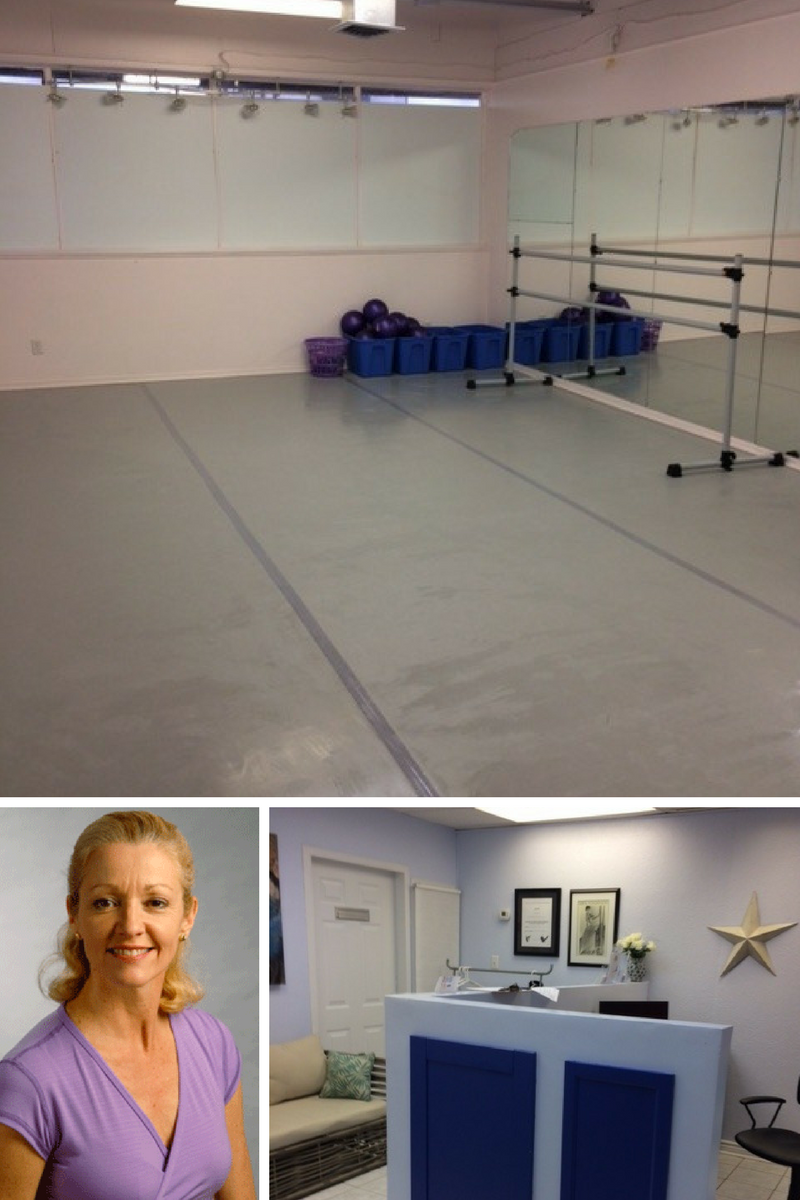
Clockwise (from top): the interior of the Barre Nouvelle studio; Studio owner Deborah Thompson; the studio entrance.
How did you first hear about the Lotte Berk Technique? “I was a dancer with the National Ballet of Canada for 11 years. I taught for 10, 11 years and it was more of a part-time thing because I was working in an office and I would teach in the evenings and the weekends. I was really looking for something a little more that was more in tune with what I wanted to do. I had heard about this barre technique so I started to search on the internet different techniques. There was Physique 57, Barre3, Pure Barre and the list goes on and on. They kept referring to this Lotte Berk Technique or the Lotte Berk Method. I figured as a classical ballerina I should go back to the classics. I learned that in Hungerford, England it was taught by Lotte Berk’s daughter, who at the time was 82. Today she’s 85 and she still holds weekly classes in her studio in Hungerford. She’s got some people that have been coming to her classes for 50 years. She learned the technique from her mother and really wants to keep that particular technique in tact because of all of these spawns from the original technique. I worked with her [Esther Fairfax] for two weeks in England and then she certified me to teach the technique in Canada. We got along really well and she just figured that because of my training and fitness background that I would be perfect to certify and keep the name alive in Canada.”
Is it true that she’s very concerned that there are not enough people in the world to keep the technique going? “Yeah keep that technique going, keep that proper technique from her mother. Let’s say it’s an original technique and there’s things about the pelvic tilt which some of the other barre methodologies use but they’re not quite getting the understanding of the technique. I have a lot of women who come to the studio and say, oh I used to take this type of technique and we used to do this technique and it was totally a knockoff and not the original way of doing it.”
So would that be considered the modern day ‘tuck’? “Well a lot of studios in Lotte Berk [Technique] call it the pelvic tilt. It’s a pelvic tilt technique because Lotte originated it. She was a modern dancer in Germany who married an Englishman and moved to London. She was in a car accident and hurt her lower back so she worked with her orthopedic surgeon to come up with the technique which was all about lengthening the spine and a slight pelvic tilt to take the pressure off of her lower back. Also to use your abs so that was kind of the methodology that she used and refined.”
On that subject, Esther has been quoted as saying that ‘Many classes now operating in the US have been influenced by her mother’s work but lack the beauty and elements of dance and aesthetic of a woman’s body.’ In your opinion, how do you think today’s technique used in Pure Barre or other variations of it have modernized the Lotte Berk Technique? “I don’t want to name any names because I haven’t actually taken any of those classes. The only classes I have taken and really loved was BootyBarre, which is the Tracey Mallett technique. I think it comes the closest [to the Lotte Berk Technique] because Tracey used to be a dancer, so she understands that. I’m finding that the other techniques go away from the dance technique and it’s not just ballet but it can be ballet, modern, any dance technique that uses posture, a long spine, those type of things. The other methodologies are getting away from that.”
What was your experience like training with Esther? “It was great, she was lovely. We would take class first and then I would work one-on-one for about 3 or 4 hours with her because you know she’s over 80 years old so, that was you know her kind of time limit. We did that for two weeks intensively, just her and I. My certification test was to teach class to her Lotte Berk people who had been taking some of her classes for 45, 50 years, so they really knew their stuff. They could do it by themselves, right? So that was my test and I passed and she said I would love for you to certify other people.”
So she gave the seal of approval. “Yes.”
So there isn’t anyone else in the country you think that’s truly teaching it. “Not the Lotte Berk Technique. Barre has expanded, especially in the US. It’s just rampant in the US but now it’s starting to come here [to Canada]. We’re always a little bit behind taking things up plus we have less population. There are quite a few barre technique places in Vancouver and in Toronto and now they are coming to Montreal.”
Do you think modern barre today has deviated from how it was originally intended to be performed or do you think we are going to find a resurgence of people looking up this Lotte Berk person and saying hmm, there might be something here? “Well you have to remember that, I mean as things modernize and techniques kind of evolve, obviously the Lotte Berk Technique is very much focused on what was happening in the 60s and 70s. Now we’ve learned even more about teaching different techniques that I think incorporating that technique and bringing it into today’s standard of fitness is what I try to do. I base my classes on the original technique, however I used some of the other elements that I’ve learned through fitness and the Les Mills program and you know you bring everything you can into the technique. I see some of the methodology getting away from the dance technique. Lotte Berk [Technique] started as a combination, not of ballet but using the barre with dance. That could be anything right, posture, core and leg lifts etc., strengthening, lengthening, flexibility, all of those things and then also the elements of pilates and yoga. All of those things come into play, so it’s a nice comprehensive way to really elongate the body. People sell it different ways but it’s obviously having that dancer’s body, that’s the big selling point because dancers are really well trained.”
What would you suggest to a barre newbie, someone who has never taken your class before? “I usually give them different options. I’ll give higher and lower options. I start obviously with a lower option and anybody who is new, it takes a couple of times to get used to the place, the technique of holding onto the barre like a dancer, having your arm in front of you and just about your posture and core. I think all of those things you take into the first class you do and then you move up from there so you go from the option 1 to the next option to the next level.”
Just to pivot a bit. In your experience of being a studio owner, what do you love most about running your own business? “The people! Well, you know because I’m an ex-dancer I really like the stage of a studio where I get to, you know perform. It’s great to bring the other people into the performance as well, so they are performing with me and we have a great time. I’ve had this studio now for just over two years and we have like a little community. We’re friends, it’s like a friendship community and we all love to do the barre technique.”
What is your favourite barre move? “My favourite barre move? You know, I don’t think I have a favourite really. For me every single point of the class is beneficial. The great thing about this particular class is obviously you start with a warmup, then you move to the barre, you do some exercises, strengthening exercises. I obviously being an ex-ballerina, I like all of the things that incorporate a little more of the ballet technique but that’s me personally. I think the class participants like that as well because some of them have taken ballet in their past lives or wanted to take ballet or, you know, took ballet and it didn’t work out for them or whatever.”
Have any of your clients taken classes anywhere else and then come to your studio and thought this is really different? “I have one client who took barre elsewhere. She just loves the technique because it’s a little bit closer to ballet, and it combines a little bit more cardio and stretch and strengthening which people really like and enjoy.”
*This article has been edited from the original source material for the web.

